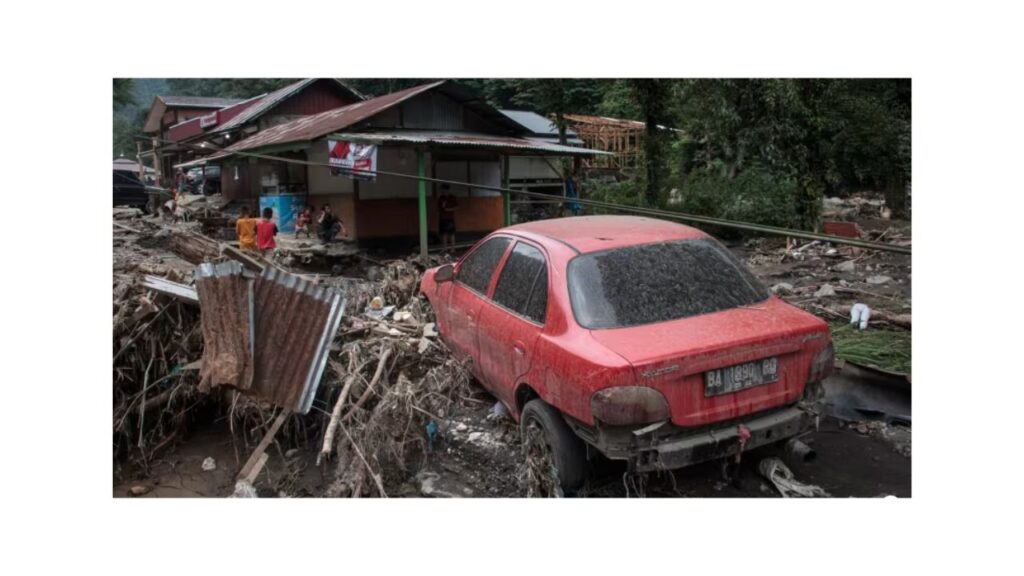On the Indonesian island of Sumatra in the west, flash floods and icy lava flows from a volcano claimed the lives of at least 37 people.
The most active volcano in Sumatra, Mount Marapi, had rocks and ash flowing down it after hours of intense rain on Saturday.
Inundating two neighborhoods, the frigid lava mudslides claimed lives and destroyed over a hundred homes, mosques, and other buildings.
Authorities warn that with 18 individuals still unaccounted for, the death toll may rise.
Those who survived described how the icy lava, which is a combination of volcanic rock and volcanic material that flows down a volcano’s slopes when it rains, approached their homes and forced them to flee.
“I heard a sound like boiling water along with thunder. Rina Devina, a 43-year-old housewife from the Agam area, told the AFP news agency that she heard large rocks falling from Mount Marapi.
“I used my cellphone as a torch because it was completely dark.” I chanted “God, have mercy” again since the road was muddy, Ms. Devina recalled.
Four of her neighbors died, the mother of three continued, and a neighbor’s house had been “flattened by big rocks.”
According to the National Search and Rescue Agency, by Sunday afternoon, rescuers had located nine more victims in the nearby district of Tanah Datar and 19 bodies in the hardest-hit town of Canduang in the Agam district.

Another inhabitant of Agam, Berliana Reskyka, talked of his experiences tending to his injured neighbors.
Some people were sobbing uncontrollably because they thought that some of their family members were still missing. Others learned that their loved ones had passed away, Berliana said to Indonesian.
According to environmental scientists speaking to Indonesian, the deluge is the most recent in a string of natural disasters that have been caused, at least in part, by human activity.
The Indonesian Forum for Environment’s West Sumatra branch director, Wengki Purwanto, stated that “excessive exploitation of natural resources and haphazard development” are to blame for the recurrent and intensifying flash floods and cold lava mudslides.
As a result, tragedies happen again every year. In actuality, their frequency rises yearly. The gap between one calamity and the next gets smaller,” he stated.
In the last six months, there have been other comparable calamities in the vicinity of Mount Marapi.
On December 5th, the volcano erupted, killing 23 hikers. Meanwhile, in February of this year, flash floods caused damage to numerous residences in Tanah Datar.
Huge ash clouds, reaching up to two kilometers in the sky, were thrown into the sky just last month during eruption days. Over 11,000 people were told to evacuate, roads were stopped, and flights in the area were impacted.
“Mountain of Fire” is how the local Minang language refers to Marapi.
